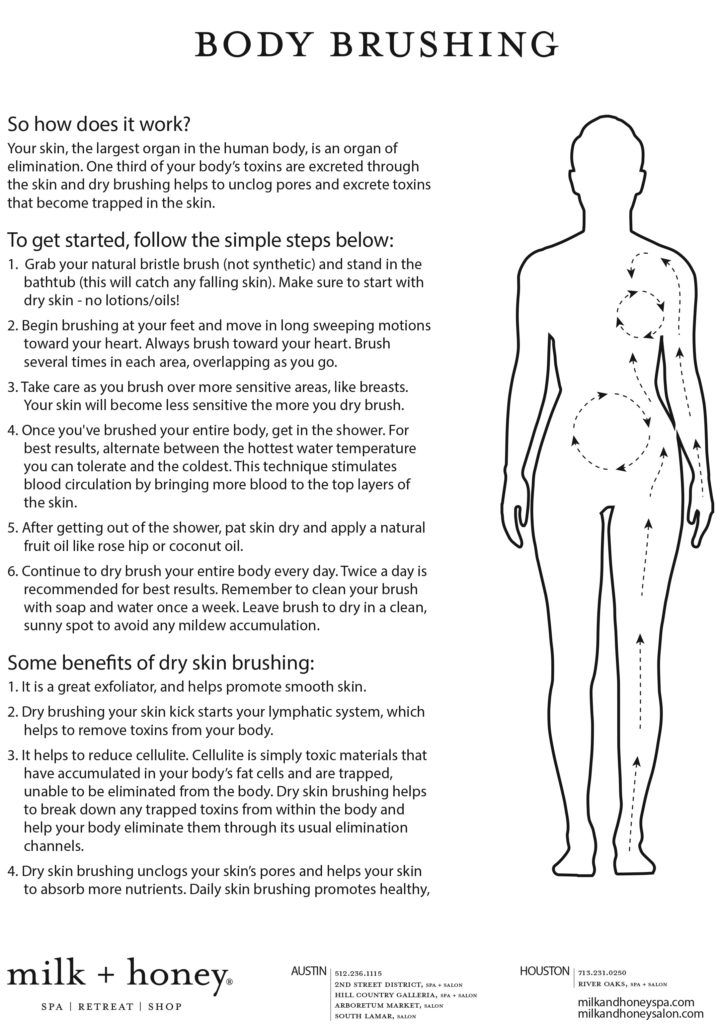
Out with the old and in with the new. Exfoliating removes dead skin cells to reveal renewed skin and allows your moisturizers and skincare products to do their job. The catch? Exfoliation strategies differ when it comes to the skin on your face and the skin on your body. Today, two experts are sharing their insight on the topic of exfoliation.


Your most delicate skin is found on your face, so it’s important to incorporate the safest and most effective routine. We recommend starting with your skin type to determine your exfoliant regimen.
Choose a method
Two common types of at-home exfoliants are chemical and mechanical.
Chemical exfoliants use either acid or enzyme-based products to naturally begin the shedding process of your skin. That means it reveals newer, brighter skin for your best glow. These are used like serums or masks — you apply atop clean skin. Depending on the acid or enzyme, it will be removed with warm water or left overnight.
Mechanical (also known as physical) exfoliants are scrubs containing beads or other abrasive-style substances. This type of exfoliant refers to your everyday scrub that buffs away dead skin cells as you apply and rinse. Both methods can produce great results, but some mechanical exfoliants are too harsh and can create micro-tears. Ingredients like salt, sugar, and jojoba seed are small enough to get the job done without harming your skin. On the other hand, ground nuts or apricot kernels are too large and abrasive. A good rule of thumb? If a mechanical exfoliant feels too harsh on the back of your hand, it’s likely too harsh for your face.
Don’t go overboard
Exfoliation has many benefits, but it can be taken too far. “People are over exfoliating.” says milk + honey esthetician, Hollee, “They think that it will remove all of their blemishes, but in reality it is hurting their skin — causing the skin to over produce oil in an effort to rescue itself.” She recommends exfoliating two to three times a week for normal, combination, or acne-prone skin. Those with sensitive skin should only exfoliate once a week.
Add it into your routine
We recommend exfoliating after toner and before serum. Your routine should look something like cleanser, toner, exfoliant, serum, and finally, moisturizer.

The rest of your skin is less delicate than your face, but there are still best practices when it comes to body exfoliation. We’re tackling the buzzy topic of body brushing and at-home mechanical exfoliants.
Choose a method
We have two principle recommendations when it comes to at-home body exfoliation: dry brushing and mechanical.
If you’re an avid beauty or wellness fan, odds are you’ve heard of dry brushing (or body brushing — the terms are interchangeable.) Your skin, the largest organ in the human body, is an organ of elimination. One third of your body’s toxins are excreted through the skin and dry brushing helps to unclog pores and excrete toxins that become trapped in the skin. LaLa, a licensed milk + honey massage therapist believes body brushing is a crucial piece to a balanced wellness routine, “your lymph system is made of tiny valves and the act of dry brushing manually flushes the lymph fluid through your valves, eliminating all the toxins and free floating radicals faster,” she says.
Similar to facial exfoliation, mechanical exfoliation plays a key role. Scrubs come in handy for body exfoliation, especially on tougher spots like elbows and knees. Exfoliating with harsher scrubs (i.e. aforementioned ground nuts) is a-ok for these spots with thicker, dryer skin. milk + honey Body Polish combines organic sugar and sea salt with coconut and jojoba oil to gently remove dry or dull skin.
Technique
“Always dry-brush extremities first towards the heart” says LaLa.”Start with your feet and work up the legs and glutes toward the heart. Next, brush from your hands up the arms, and toward the heart. Then, cover your abdomen and back (as well as you can.) Finally, wrap up with your chest.”
Scrubs and body exfoliants aren’t all made equal, so the recommended techniques may differ. Generally, we’d recommend massaging scrubs into warm, damp skin and rinsing thoroughly. Follow up with a moisturizer and get ready to glow.
Add it into your routine
Ideally, we recommend dry brushing daily. Regular usage can boast benefits like exfoliation, lymphatic drainage, circulation, and prevention of cellulite. For most dynamic results and longevity of your brush, we recommend only using the brush dry — before applying any products or water to your skin.
For exfoliating body scrubs, we recommend a goal of two to three times a week. Pay extra attention to your elbows, knees, and heels. Feel free to add a loofah or natural sea sponge into the mix to take your exfoliation game to the next level.
To get started, follow the simple steps below:

Follow our Instagram for more wellness and beauty tips.


2 Comments
I had no ideea exfoliating was so important. I only do it on average every 3 months, now that’s gonna change. I did it last night for the first time in a while and I’m so happy I did. I followed this guide on how to exfoliate your legs and did the sugar scrub and everything. I’m going to have to work this out into my weekly beauty routine from now on!
I always prefer the mechanical exfoliants, and it is very effective for me. I used that for years.